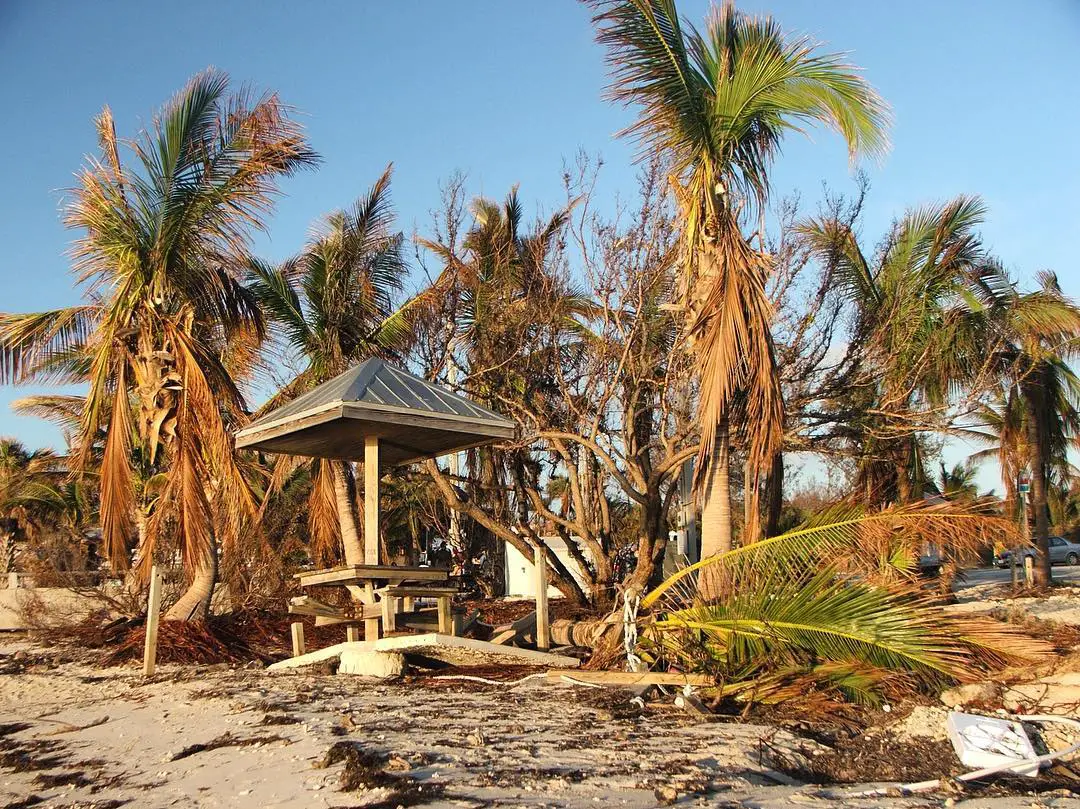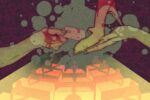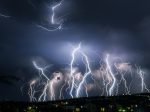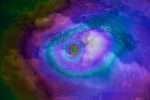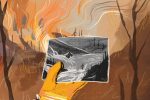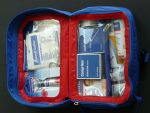I’ll never forget the wail of the wind. It was a loud, sharp, whistling sound that still echoes through my mind. I desperately wanted to gaze outside of my window to watch the hurricane hiss, but when I pulled back the blinds, I could only see the metal shutters. I flipped my light switch on but remained in my pitch-black bedroom.
On October 23, 2005, Hurricane Wilma hit the west coast of Florida. Wilma was a Category 3 hurricane with winds reaching 127 mph. Wilma happened about two months after Hurricane Katrina plowed through Louisiana.
According to Hurricanes: Science and Society, more than 6 million people in Florida lost their electricity and didn’t regain it until a week or two later, after multiple power lines collapsed.
I was in second grade.
I carefully tip-toed to my living room, expecting to find a source of light. When I turned the corner, I saw my parents and my older brother sitting on the couch, nestling in blankets and lighting candles. My parents discussed the hurricane while my brother played Mario Kart on his Nintendo DS. I took a seat next to him and watched Luigi race across the finish line.
Hurricane Wilma flew through Florida’s peninsula in about 4 1/2 hours. As it made its way toward the Atlantic Ocean, it quickly grew stronger. By the time Wilma reached Fort Lauderdale, the behemoth storm had already terrorized neighboring regions.
People who lived on the east coast of Florida didn’t think a hurricane from the Gulf of Mexico could cause catastrophic damages to their cities, but, within a few hours, they learned their logic was severely flawed.
There was something missing in the sky that afternoon. It was strange knowing that the sun was up, but it was invisible to us. Wilma was holding it hostage as its reign of terror continued throughout the day. Nonetheless, my family of four resided safely in our home.
Candles illuminated the rooms, blankets covered the furniture and board games piled on the floor. With all the chaos and turmoil occurring right outside those sturdy concrete walls, it was somewhat peaceful inside our house. It was our castle that would protect us from the venomous sea serpent. I’ll never forget that sense of comfort that I was blessed to have. Unfortunately, many Florida homeowners can’t say the same.
According to a 2005 International Federation of Red Cross report, there were 27 American Red Cross shelters across Florida during the hurricane. Thousands of people were homeless following Wilma’s devastating blow. There were 27,700 houses, mobile homes and apartments either destroyed or left temporarily unlivable.
The screams of the wind had ceased. The rain was no longer pounding on our house. We knew that the eye of the hurricane was above us, so we all decided to momentarily escape our fortress. There was a calm breeze blowing. You’d never believe the insanity that just occurred.
My friend’s trampoline rested in my next-door neighbor’s front lawn. My friend lived across the street from us, and her trampoline used to be in her backyard. Wilma lifted it up, slammed it through my friend’s fence, and proceeded to drag it to my neighbor’s house.
We also noticed that a massive tree from across the street uprooted and flew into our backyard, shredding our wooden fence to pieces. A frenzy of black roof shingles lay everywhere. Palm fronds, trees, leaves and bushes were plastered onto the white sidewalks. I could hardly recognize the exterior of my home, much less the interior of my neighborhood. And that was just what we were able to see from down the block. We didn’t fully understand the scope of the demolition yet.
Even though the hurricane was far gone, Wilma definitely left its mark. It’s one of the costliest U.S. hurricanes ever recorded. According to a 2016 Sun-Sentinel article, Hurricane Wilma caused $22.3 billion dollars in damages.
The Federal Emergency Management Agency distributed 1.2 million gallons of water to three counties: Miami-Dade, Broward and Palm Beach. According to the National Weather Service, Broward and Palm Beach received the worst structural damages. Homeowners’s roofs caved in, and high-rise buildings’s windows shattered.
To accommodate for any leaking roofs, the U.S. Army Corps of Engineers administered the Operation Blue Roof program, which provided more than 70,000 tarps to Florida residents. These tarps were able to withstand any wind and rain as the hurricane’s outer bands hovered over.
We felt the wind start to pick up again, so we scurried back inside. We happened to be one of the few families who owned a generator. It wasn’t strong enough to provide us with light and electricity, but it did keep our refrigerator running. But that didn’t last too long.
A day without power had gone by and our generator began to fail us. Our fridge slowly started warming up, just like the rest of our house. With no electricity for air conditioning, it was getting pretty musty in our Florida home.
My dad made the executive decision to drive four hours north to Orlando. Hurricane Wilma barely touched Central Florida, so he figured we could stay in a hotel with running water, functioning electricity and air conditioning for as long as we could.
Our trip to Orlando couldn’t start without filling up the gas tank, and that was an entirely different trip in itself. Many gas stations were closed because they had no power and no generators. We drove to the nearest gas station only to find a winding line wrapped around the corner.
After several attempts, we finally were able to fill up our car’s tank. Taking the interstate was the best route because there wasn’t as much debris blocking the road or broken traffic signals to worry about. According to Sun-Sentinel, there were more than 5,000 traffic signals down in the tri-county area, and it took about three weeks to fix most of them.
When we got to our hotel in Orlando, we couldn’t help but worry about our hometown. My parents were glad to finally watch the news after not having electricity to power our TV. They wanted to know any important updates on the catastrophe. Everyone wanted to know.
But that’s the unsolvable problem about natural disasters. No matter how many times meteorologists tell people to buckle up and get ready for a hurricane, tornado or blizzard, no one really knows what’s coming. No one really knows how devastating the aftermath will be.
Some people think nothing of the reoccurring weather warnings, while others take them too seriously. But when you’ve experienced loss at the hands of a hurricane, you can never be too cautious.


